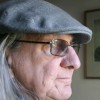What did Nelson Rolihlahla Mandela do to become the genius of a country and an icon for the world
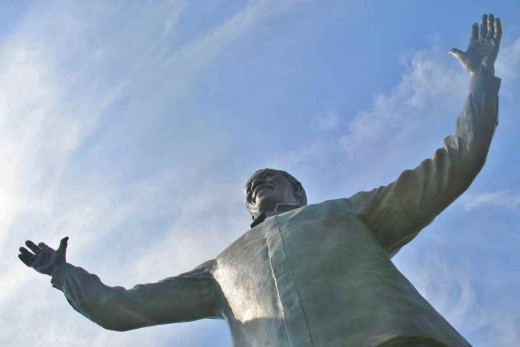
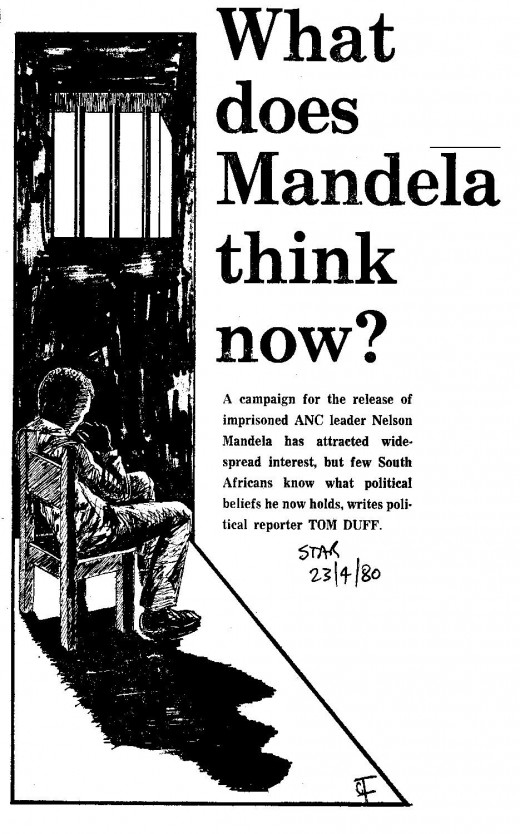
Introduction - the invisible symbol
Asimbonanga (We haven't seen him)
Asimbonang 'uMandela thina (We haven't seen Mandela)
- from "Asimbonanga" by Johnny Clegg
Back in the mid-1980s when Johnny Clegg wrote these poignant words few people indeed had seen the man who was already the invisible symbol of a people's struggle for freedom.
In the midst of the darkest days of apartheid, when the mostly white troops of the South African army were permanent features in the black townships outside the major cities of South Africa, when black anger was palpable in the streets and the oppressive machinery was working with frightening and arbitrary efficiency, one man whose voice had not been heard publicly in almost three decades, the lineaments of whose face were unknown to most, and whose image and words were banned, was the focus of hope for millions.
It is difficult now, but important, to remember those times when fear was such a dominant feeling all through society, when one did not know for sure who was friend and who was foe, one did not know how much of oneself to reveal to anyone else, when people disappeared in the night and one did not know whether they had gone into exile via the underground railway or had been taken by the secret police, and one was afraid to ask.
In those days Robben Island was a darkly forbidding place of mystery and loathing, visible across the beautiful waters of Table Bay. Writing in an article published Drum magazine in May 1980 but written two years before, Mandela's daughter Zinzi (17 years old when she wrote it) captured some of the pain of the years of Mandela's incarceration there and its effect on his family. When she and her older sister Zeni arrived in the visiting room, she wrote: "My father seemed to go numb with disbelief and happiness at the sight before him (the two sisters had brought Zeni's daughter Zaziwe with them, so he was seeing his grandchild for the first time). Nobody spoke for the first few minutes; it was just a matter of kissing glass panels, fighting back tears and tasting happiness."
Johnny Clegg and Mandela sing "Asimbonanga"
A Poem by Zinzi Mandela, written when she was 12
The van pulls away
Mother watches bravely enough
I as a child do
not understand
but now I do
my heart aches
how I long to see my father
at least to hold his hand
and comfort him
or at least to tell him
he'll be back some day.
The Robben Island ordeal
Oh the sea is cold and the sky is grey
Look across the island into the bay
We are all islands 'till comes the day
We cross the burning water - from "Asimbonanga" by Johnny Clegg
Later the same article she wrote: "I am not allowed to say what Tata (meaning father) told me - not even the nice things - because he is banned and to quote him is against the law."
Since Mandela's then-wife Winnie Madikizela-Mandela was at the time also banned and banished to the little town of Brandfort near Bloemfontein in the Free State she had to go through incredible difficulties even to visit her husband, who by 1982 had been moved to Pollsmoor Prison outside Cape Town. Newspaper editor Allistar Sparks was able to accompany her on one visit and describes, in the Sowetan newspaper of 6 May 1982, the complicated process: "Her instructions were: don't leave home before 5pm on Friday, April 23. Report to the police station before leaving Brandfort. Drive by the shortest route to Bloemfontein Airport. Take flight SA 332 to Cape Town. Do not leave the airport while waiting for the flight. On arrival in Cape Town drive by the shortest route to the main police station and report, then by the shortest route to the home of a friend whose name she provided.
"She could not get out of the car on route, or step outside the Cape Town friend's house except to go to Pollsmoor at a specified time on Saturday and again on Sunday - again by the shortest route."
Winnie Madikizela-Mandela's trip had on this occasion been financed by an English widow who was touched by the plight of the Mandelas who had been together for only about four months in their then 25 years of marriage.
Sparks concluded his article on thisexperience: "At Pollsmoor, Mrs Mandela saw her husband through a glass partition with a two-way microphone. He asked that I be brought to the door so he could wave his thanks to Winnie's English benefactor. This was refused."
In a comment in the Sowetan newspaper of14 October 1982 the editor wrote: "The family has been torn apart because man and wife have dared to challenge the infallibility of this Government."
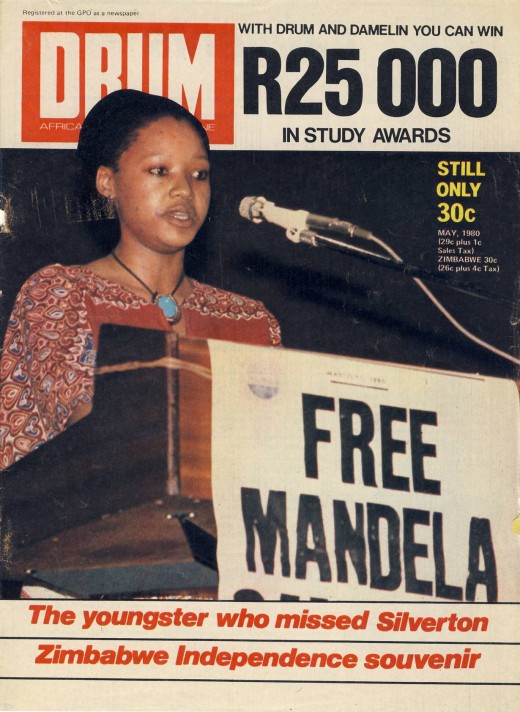
The "Release Mandela Campaign" and freedom at last!
Bring back Nelson Mandela
Bring him back home to Soweto
- from Hugh Masekela's song "Bring Back Nelson Mandela"
In April 1980 Archibishop Emeritus Desmond Mpilo Tutu, then Bishop, while General Secretary of the South African Council of Churches (SACC), made a remarkably prescient speech to students at the University of Natal in Durban, almost exactly 10 years before Mandela was actually released, in which he predicted that South Africa would have a black Prime Minister in five to ten years: "What the white community still has in its power to do is to decide whether that Prime Minister is going to end up there through a process of reasoned negotiation and discussion at a conference table or whether he will have to do so after bitter fighting and bloodshed.
"I think we have a very good chance of pulling off the first alternative. And we need Nelson Mandela because he is almost certainly going to be that first black Prime Minister.
"He represents all our genuine leaders, in prison and exile.
"So to call for his release is really to say, please let us sit down, black and white, and work out our common future, so that we can move into this new South Africa which will be filled with justice, peace, love, righteousness, compassion and caring."
And in February 1990 South Africa and the world watched in wonder, joy and some trepidation, as Nelson Mandela walked out of prison, hand-in-hand with Winnie, with fist raised high in the ANC salute.
That day my family and I sat glued to the television as we watched history being made, as we watched the first glimmerings of hope for a new country coming out of that prison, and we saw for the first time that face which would, in the months and years ahead, become so familiar, and so beloved, improbably as it must have seemed at the time, by all South Africans, black and white.
Hugh Masekela sings "Bring back Nelson Mandela
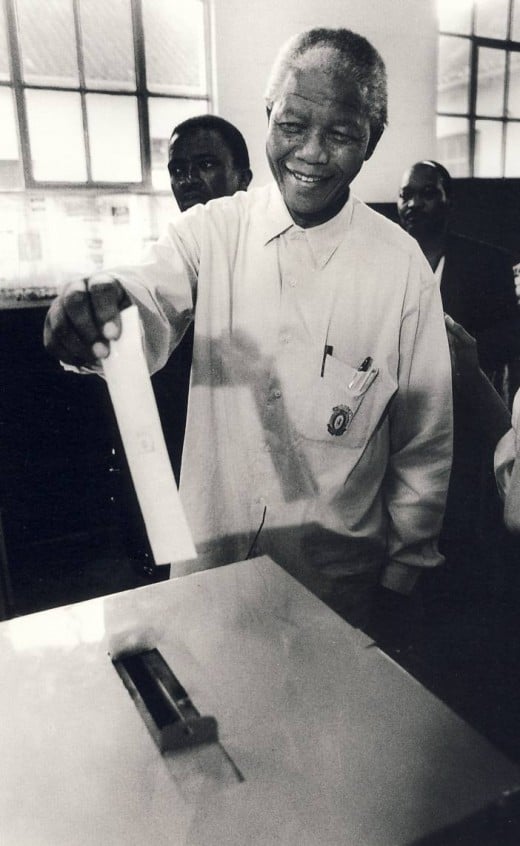
- Russ Baleson on HubPages
Hi, I am a South African turned Brit and have been living in the UK for twelve years. I am a management training consultant and life coach and...
Elections at last - an end to waiting
What followed was the painstaking, sometimes frustrating, negotiation process of the Congress for a Democratic South Africa (Codesa) which went on, in fits and starts, until the Interim Constitution was agreed and elections could be held. These elections took place on 27 April 1994, now South Africa's National Day.
Mandela was a key in the negotiations and in the elections. His moral courage and deep compassion for people held the country together through some very rough times, when our emotions see-sawed wildly between euphoria and despair.
One of the most traumatic events of the pre-election period was the assassination of South African Communist Party leader Chris Hani on 10 April 1993 by right-wing Polish immigrant Janusz Walus and co-conspirator Clive Derby-Lewis, a South African Conservative Party Member of Parliament.
At the time of Hani's assassination, which severely threatened the on-going negotiations and the fragile peace of the country, Mandela said in a broadcast speech: "Tonight I am reaching out to every single South African, black and white, from the very depths of my being. A white man, full of prejudice and hate, came to our country and committed a deed so foul that our whole nation now teeters on the brink of disaster. A white woman, of Afrikaner origin, risked her life so that we may know, and bring to justice, this assassin. The cold-blooded murder of Chris Hani has sent shock waves throughout the country and the world. ... Now is the time for all South Africans to stand together against those who, from any quarter, wish to destroy what Chris Hani gave his life for – the freedom of all of us."
The elections themselves were an incredible achievement given the short time available to organise and run them. The Independent Electoral Commission (IEC) was set up in mid-December 1993 with a mandate to run the elections by 27 April, a date set by the Codesa negotiators. A very tall order, considering that many millions of South Africans had never in their lives voted, there was no voters roll, no-one in South Africa had any experience of running so large an election, and violence and intimidation were still rife in large parts of the country.
But for all the difficulties Mandela was able, for the first time in his life, to cast his vote in a general election, along with millions of his fellow-citizens.
Paul Bell, the IEC's Director of Communications, wrote of the elections, "there would never be anything like it again. No mission quite so soaring, nor worthy, nor consuming, nor exhilarating."
Heady days indeed, and over them all the towering figure of Mandela stood as the symbol, the hope of democracy and the triumph of the people over long years of oppression and hardship. Not that these would disappear overnight, but that at least the reconciliation could begin, the putting together of a country that had been ripped apart, the finding of bridges between people who had previously thought of themselves as totally alien to each other.
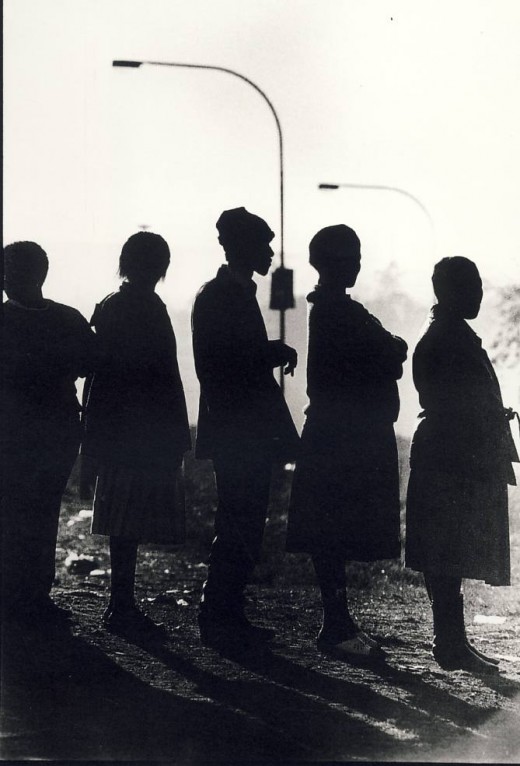
First Citizen of South Africa to citizen of the world
After the elections, which the ANC, predictably, won by a landslide, Mandela really began to show his stature and skills as a leader and reconciler. He seemed to be all over the place! He was untiring in his efforts to bring peace and reconciliation to a country that had deep, deep wounds.
The tone was set when he addressed the crowds on the Grand Parade in Cape Town after his formal election by Parliament as the President: "We place our vision of a new constitutional order for South Africa on the table not as conquerors, prescribing to the conquered. We speak as fellow citizens to heal the wounds of the past with the intent of constructing a new order based on justice for all."
One memorable day, in the midst of all the busyness of trying to stitch a country back together and make the democratic process work again, Mandela typically made two symbolic visits, which were genuine expressions of his humanity. A black family had been traumatised by the shooting to death of one of their children by a white farmer, who claimed that the child had been trespassing on his land. Mandela came to comfort the family in their grief.
On the same day a young white child, dying of leukaemia, was visited by Mandela, who told the child how much he cared for children, and how he felt for the family and their suffering.
It was a Mandela magic moment, and he continued to make Mandela magic, time and time again.
Who could forget the sight of Mandela, dressed in a Springbok rugby jersey, showing his evident delight in the victory of the Springboks in the 1995 Rugby World Cup? It was an incredible moment for the new South Africa, as rugby was seen as the Afrikaners' national sport, a symbol of the old South Africa, and here was Mandela, making it a new South Africa thing. Unforgettable. Magic. Mandela magic.
In 1999 Mandela signed into law the final constitution of South Africa, which incorporates a Bill of Human Rights.
And so as South Africa faces its third general election since the coming of democracy, and the fifteenth anniversary of its freedom, Mandela is in his twilight years, comforted by his loving third wife, Graca Machel, and surrounded by the rolling hills of his Transkei home in Qunu, near Mthatha, basking in the accolades from people all over the world, including the 1993 Nobel Peace Prize. He was the third black South African to be so honoured - Chief Albert Lutuli was the first and Archbishop Emeritus Tutu the second.
Whatever problems South Africa faces, whatever the feelings of insecurity that come with a change in political leadership, the legacy of Mandela is captured in the closing words of his inaugural speech and to a very considerable degree due to his example and leadership:
"Let each know that for each the body, the mind and the soul have been freed to fulfill themselves.
"Never, never and never again shall it be that this beautiful land will again experience the oppression of one by another and suffer the indignity of being the skunk of the world.
"Let freedom reign.
"The sun shall never set on so glorious a human achievement!
"God bless Africa! "
To which I can only say, "Amen!"
Copyright Notice
The text on this page, unless otherwise indicated, is by Tony McGregor who hereby asserts his copyright on the material. Should you wish to use any of the text feel free to do so with proper attribution and, if possible, a link back to this page. Thank you.
© Tony McGregor 2009
